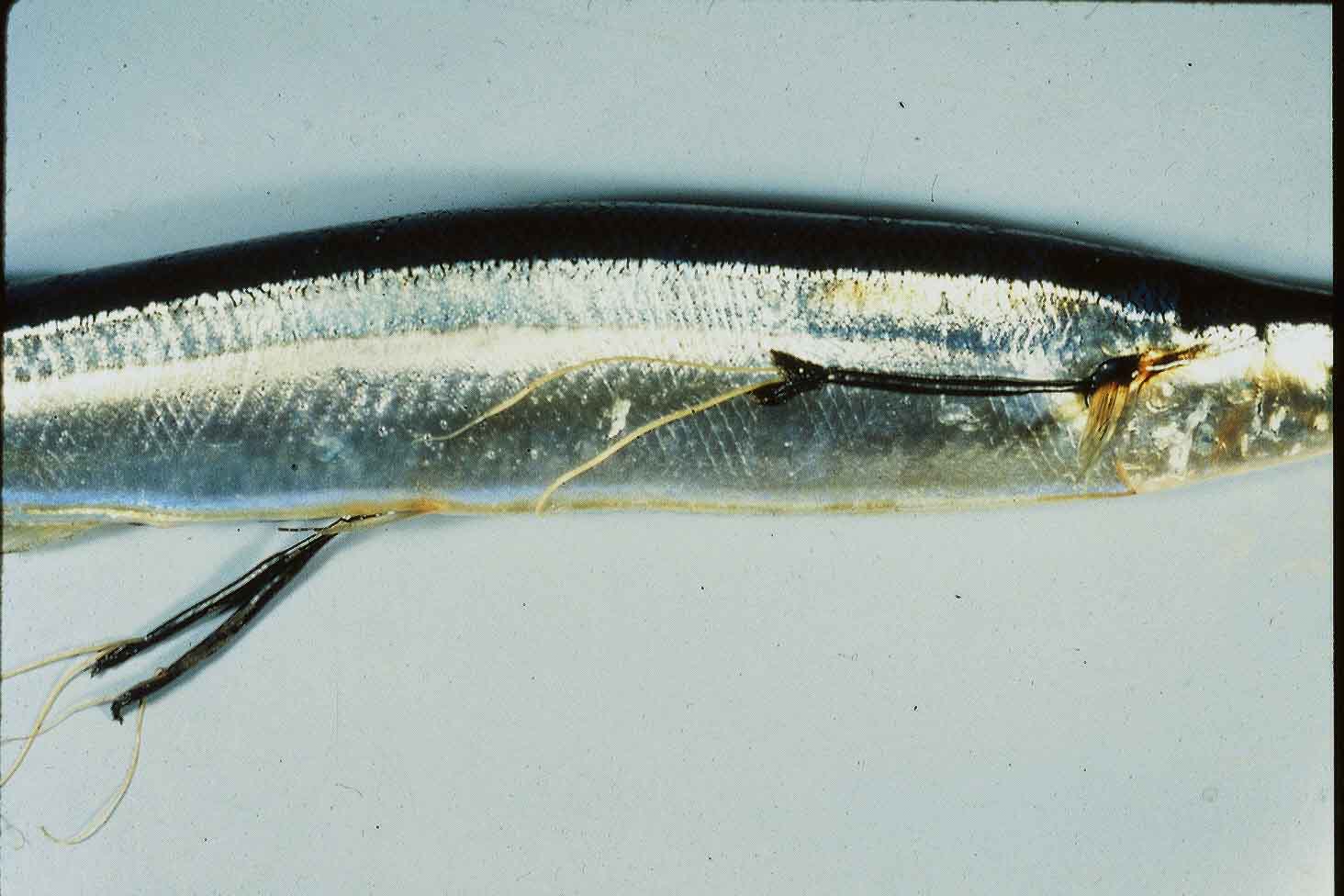
| Parasite | Pennella sp. |
|---|---|
| Taxonomy | Arthropoda, Copepoda, Pennellidae |
| Host | Pacific saury (Cololabis saira) |
| Infection site | Skin |
| Clinical sign | A black worm attaching on the skin is visually observed (Fig. 1). |
| Parasitology | Only females parasitize the fish. The body is black and about 7 cm long. The anterior part of the parasite penetrates into the host musculature of the host and the trunk with a pair of long egg sacs protrudes externally from the host. |
| Pathology | Pathogenicity to fish host is low, but it is problematic because its removal of worm is laborious. |
| Health hazard | Since this parasite is not infectious to human, it is harmless in food hygiene. |
| Diagnosis | Check the morphology of the parasite in the skin. |
| Other information | In 1981, this parasite first appeared in Pacific saury. Prevalence of infection increased rapidly in 1982-1983 (reached at about 33 % in 1983), but it declined dramatically in 1985 and disappeared in 1986. A study on this parasite is a good example of utilization of parasites as a biological tag (Ogawa, 2005). It was previously considered that the population of Pacific saury was divided into two; a western North Pacific Ocean population and a central North Pacific Ocean population. However, it was indicated that the two saury populations are not separable, because similar changes in prevalence of Pennella sp. were observed between the two populations (Nagasawa et al., 1988). |
| References | Nagasawa, K., Y. Imai
and K. Ishida (1988): Long-term changes in the population size and geographical
distribution of Pennella sp.
(Copepoda) on the saury, Cololabis saira, in the western North Pacific Ocean and adjacent seas. Hydrobiologia, 167/168, 571-577. Ogawa, K. (2005): Parasites as a biological tag. Parasitology of fishes in aquaculture. University of Tokyo Press, p. 54-62. (In Japanese) |

(Photo by K. Nagasawa)
Fig. 1. Pacific saury parasitized by Pennella sp.